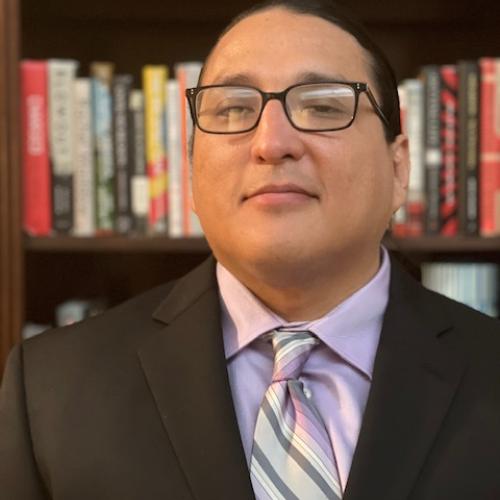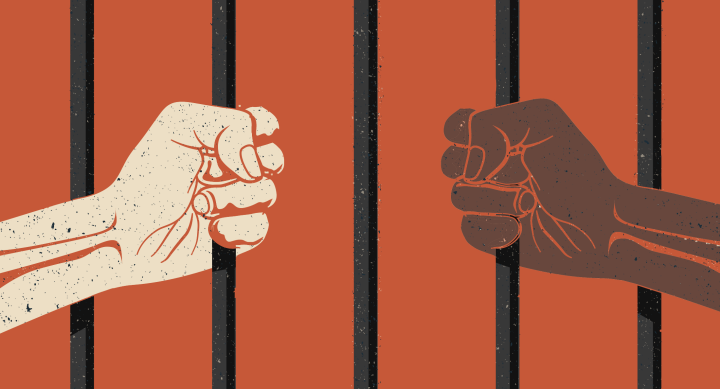As I watch the celebrations of Black History Month in the U.S., I can’t help but think about the extent to which racial divisions dominate the prison environment. And I’m reminded of one particular moment when I was incarcerated at the Ramsey Unit in Texas, when it seemed we might be able to transcend those racial lines and acknowledge our shared humanity and brotherhood.
The Ramsey Unit is one of two Texas prisons that offers four-year college degrees, and after completing my associate’s degree, I was eager to continue my education there. As in most Texas prisons, Ramsey’s living areas were racially segregated--not by official policy, but by the informal rules guiding most aspects of prison life. People of different races can spend years on the same cellblock and never speak, unless something happens outside the norm to break down those barriers. Black, White, and Latino guys had separate tables, benches, showers, and telephones. Those rules were explained by the people on the cellblock when a new person arrived, and the penalties for violating the rules were, at times, severe.
But all of that changed—at least temporarily—when a group of us started trying to improve our public speaking skills. Jeremey, Animal, and I were taking a communications class together one semester. A class assignment was to present before our fellow students. Our presentations would be graded by our peers, and observers would be required to give constructive criticism.
Jeremey is black, Animal is white, and I am brown, and the race rules governing who could be where made it hard for us to be able to meet and talk outside the classroom.
Just like in school in the “free world,” some students did better than others, and after every class, we all had fun teasing each other about our topics and the mishaps during presentations. One day after class, Jeremey, Animal, and I were in the hall waiting for count to clear, and we struck up a conversation about ways we could continue to practice our public speaking outside of class. That’s not as easy as it sounds, and we knew we had to be cautious about this: Jeremey is black, Animal is white, and I am brown, and the race rules governing who could be where made it hard for us to be able to meet and talk outside the classroom.
Jeremey suggested that we begin a Toastmaster’s class—a program that teaches public speaking and leaderships skills—during the Muslim service on Saturday. Because it’s frowned upon for racial groups to intermingle, we knew this idea would need to be approved by all three races. Everyone had to agree that the meeting area in the old chow hall would be a neutral space with no violence. It would be a challenge, but, as I began to seriously consider his proposal, I began to think that it just might work.
I asked Jeremey if he thought he could convince his Muslim brothers to let us hold our class during their services. He said that he could get it done—he had rank in the group. Animal and I thought we could do the same in our respective groups, so we agreed to meet with our race leaders to propose the idea. We brought them our proposal out on the rec yard where all of the important decisions were made. All the prison gangs of each race had to give their approval. If one group opposed the idea, it could potentially fall apart.
Initially, some gangs were opposed. But we used our influence and lobbied hard. Eventually, everyone agreed to the idea, but on a trial run. Everyone wanted to see how this would turn out, and all three of our butts were on the line if anything bad happened.
The first night of the class, Jeremey, Animal, and I presented. The attendance was light. I think many people expected that things would go badly and didn’t want to be around to see the outcome. But we took our responsibilities seriously and worked hard. We encouraged each other and gave thoughtful feedback.
As word of our class spread, the attendance steadily grew. Participants were allowed to present on a topic of their choice, and the topics discussed were as diverse as the participants. Men spent hours prepping for their big night, and the buzz created by both good and bad presentations lasted throughout the week. Soon people of different races were hanging out together in the dayroom chatting about something or even sitting on the same bench to watch TV. Slowly but surely, the racial dynamic of the unit started changing. There was no longer a white table or a black bench. There were just tables and benches. And although the class did not last a year, because both Jeremy and I were shipped off to different prisons, people of different races became friends, and some of those friendships continue to this day.
So much about prison life is defined by strict racial divisions, but for this one year, three men of different races were able to overcome the odds and break racial barriers...
As I reflect on this experience, it reminds me that just because something has always been done a certain way doesn’t mean that it must continue to be done that way. So much about prison life is defined by strict racial divisions, but for this one year, three men of different races were able to overcome the odds and break racial barriers on the Ramsey Unit. We did not listen to the criticisms or let our fear of the potential dangers get in the way. Instead, we challenged the norms and were able to unite racial groups through education and a sincere desire to improve our skills. It may not have been an event you’ll read about in the history books during Black History Month, but in our own way, we made history in the Ramsey prison, and that’s certainly something that should be celebrated.
"Degree of Civilization” is the blog of the Prison and Jail Innovation Lab, its title adapted from Dostoyevsky’s famous quote, "The degree of civilization in a society can be judged by entering its prisons.” Our blog posts will explore and analyze the dehumanizing and dangerous conditions in our nation’s prisons and jails and the critical need for effective independent oversight and meaningful data about what’s happening behind the walls. We’ll be commenting on recent news and developments; analyzing data that highlights trends that affect the safety and health of the people who live and work in correctional facilities; and reflecting on the lived experiences of people who are incarcerated. The entire PJIL team will be contributing to the blog, so you are sure to hear different voices and approaches to these issues.
Author
-

Benny Hernandez III
Benny Hernandez III is pursuing his Master’s in Public Affairs with a focus on correctional oversight and urban and state affairs. He has substantial public policy experience on the international, national, and local levels of government, working with the Houston Mayor’s Office on gang issues and with the Texas Civil Rights Project, the ACLU of Texas, and the Texas Criminal Justice Coalition on criminal justice reform.
Benny brings his mass incarceration lived-experience to PJIL. Benny’s parents cycled in and out of prison when Benny was a child, and he became homeless and dropped out of school. He developed a substance use issue, leading to his own incarceration in a youth prison in Texas, and later, in the Texas Department of Criminal Justice (TDCJ). He knew that education was the key to escaping a downward spiral, so he earned his associate and bachelor degrees, graduating summa cum laude, while serving ten years in prison.
Outside of his work with PJIL, Benny is developing a project called Street Politicking. His vision is to increase political participation in communities that have been directly impacted by mass incarceration.
Key Words
lived experience
prison
race


